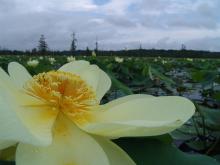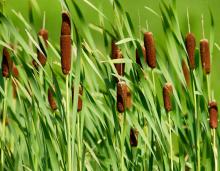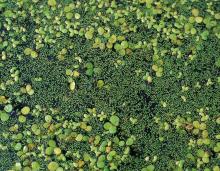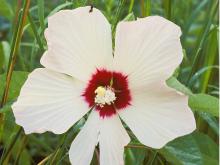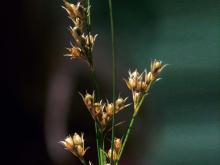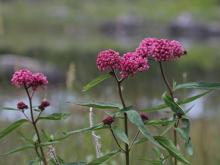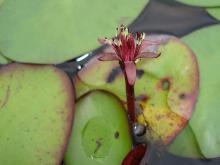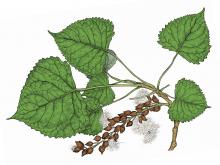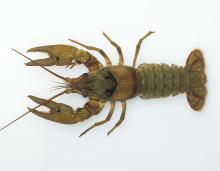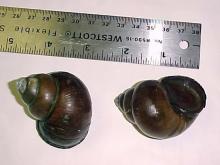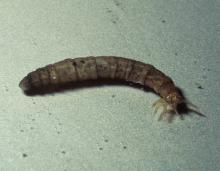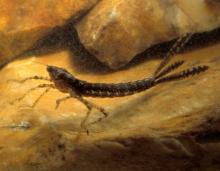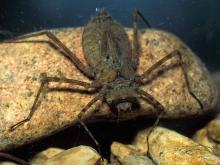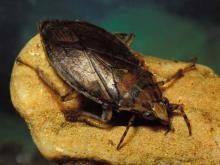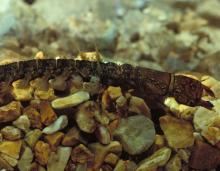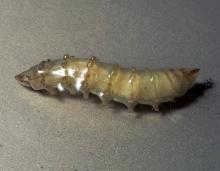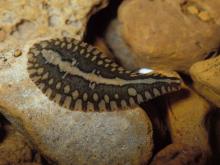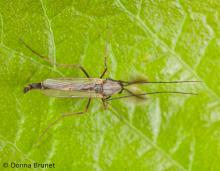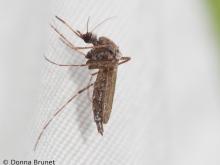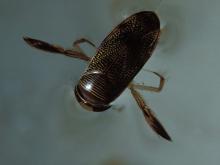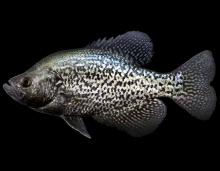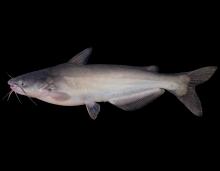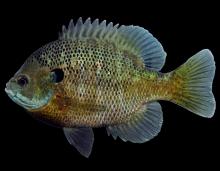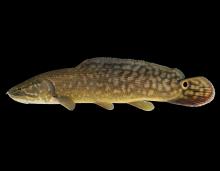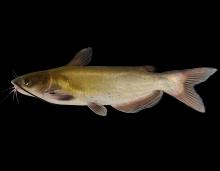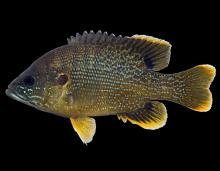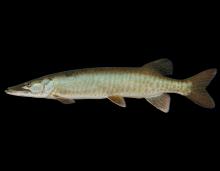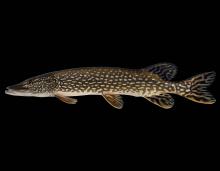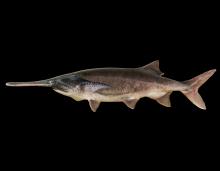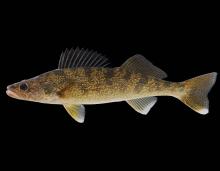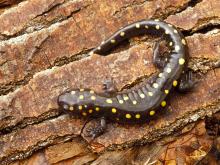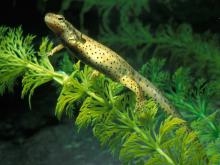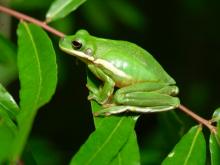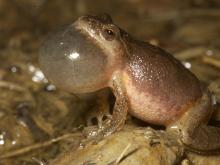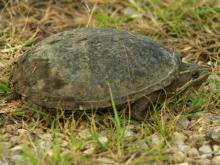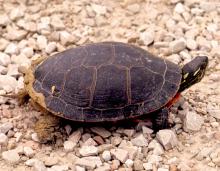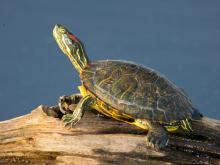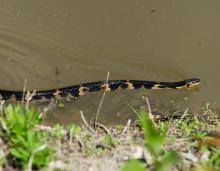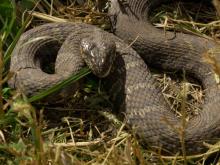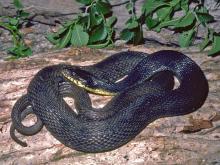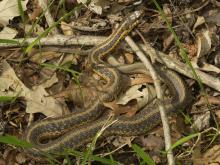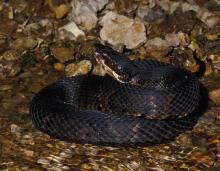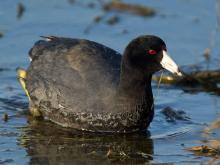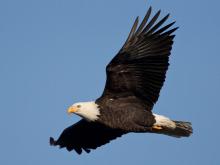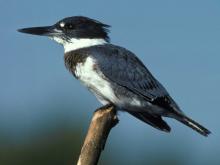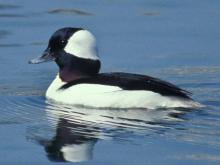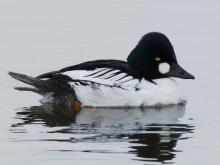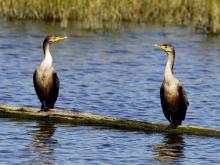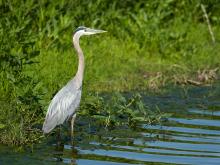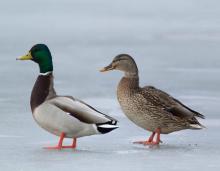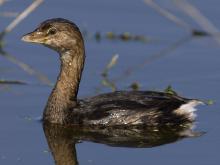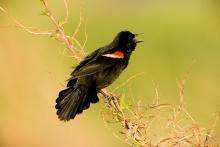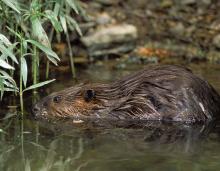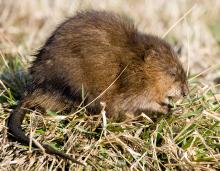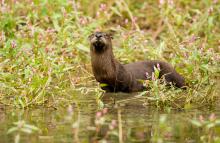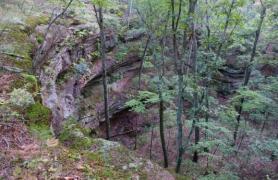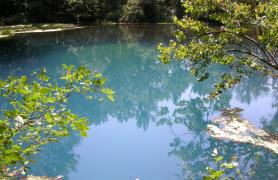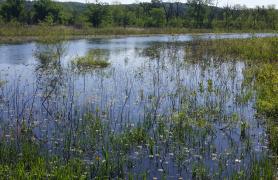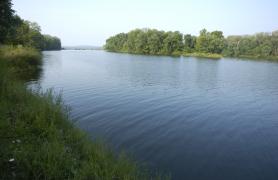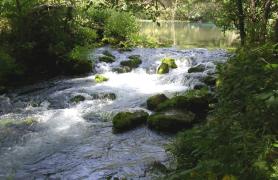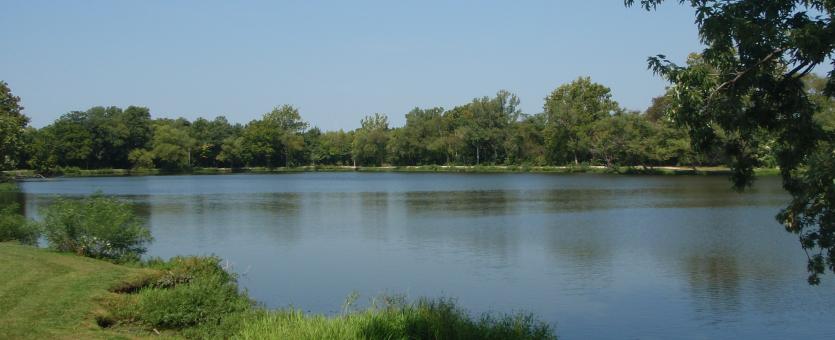
Lakes, ponds, and reservoirs, as aquatic habitats, are quite distinct from rivers, creeks, and streams. The biggest distinction is that they are inland basins where water does not flow — there isn’t a current. Their special characteristics and processes make them home to certain kinds of plants and animals not found in flowing water.
Missouri’s lakes, ponds, and reservoirs give us opportunities for boating, fishing, swimming, waterskiing, and many more forms of recreation. Think of some of the things they offer:
- They provide a cool respite on hot summer days.
- In pastures and in natural areas, ponds provide water for livestock and wild game.
- Small, fishless ponds — sometimes existing only in springtime — are crucial habitat for frogs and salamanders, whose delicate eggs must be laid in water.
- Our larger lakes are income-generating tourist destinations.
- Our reservoirs help protect our lands from flooding, and turbines within their dams generate electricity.
Defining Ponds, Lakes, and Reservoirs
Ponds
Ponds, of course, are smaller than lakes. Ponds are typically so small and shallow that rooted plants may grow at any point across the bottom. Also, the water temperature in ponds is mostly the same from the top to the bottom, and it fluctuates along with the air temperature. The amount of dissolved oxygen can vary a great deal over the course of a day. Wave action is negligible, and plants encircle the shoreline.
Lakes
Lakes are larger than ponds and are deep enough that rooted plants are restricted to shallower portions near the shore. The temperature is fairly consistent over time, as a larger volume of water is slower to fluctuate. During summer and winter, our larger lakes stratify, developing layers of water having different temperatures at different depths. The different layers mix very little with each other. In spring and fall, when the surface water temperature approaches that of the deeper water, our larger lakes experience turnover, a top-to-bottom mixing of previously stratified water. Within the course of a day, the amount of dissolved oxygen stays relatively stable in a lake. The larger surface area catches wind, and the greater depth allows wave action to develop. Wave action, in turn, often creates sandy or rocky shorelines with few aquatic plants, usually on the side of the lake furthest from the prevailing winds.
Reservoirs
Reservoirs, or impoundments, are lakes created when people block the flow of a stream by constructing a dam. The stream flow is arrested, and water pools up behind the dam and fills in the valleys or other low areas where the stream once had flowed. The dams of large public reservoirs have turbines within them for generating electricity, and engineers can adjust the amount of water allowed to flow through them at any particular time, responding to flood threats or drought conditions.
The Study of Lakes — Limnology
You’ve probably heard of oceanography (the study of oceans), but have you heard of limnology? Limnology (lim-NOLL-ogee) is the study of inland waters. Unlike oceanography, limnology focuses on freshwater bodies (especially lakes and ponds) as opposed to saltwater seas and brackish estuaries. Limnology encompasses physics, chemistry, geology, physical geography, soil science, hydrology, biology, and ecology. What happens in lakes is important not only for aquatic plants and animals but also for public health, public use, groundwater quality, fisheries, and many species of wildlife that come to lakes for habitat and drinking water.
If you are wondering why a lake or pond is green with algae, or is colored a murky red, or is crystal clear, you might be surprised by how complex the answer might be. Lakes, ponds, and reservoirs are made and influenced by the lands where they are located. Water characteristics such as temperature, dissolved oxygen, pH, hardness, dissolved solids, and so on are crucial for determining what’s going on in a pond or lake. These factors are influenced by types of soils, bedrock, drainage patterns, land use, nutrients (including fertilizers), and more.
Limnologists have useful careers, improving fisheries and water quality around the world, helping landowners, land managers, and public policy officials make good decisions.
How Lakes Form Naturally
What makes a lake? First, let’s take a global perspective — lakes can form in many ways:
- By volcanoes, when water collects in the crater left behind after volcanoes explode (for example, Crater Lake in Oregon)
- By the wind, when it scours a hole in the landscape (think of the wide, flat, round, shallow depressions in the southern high plains, which become lakes and wetlands during the rainy season)
- By land subsidence due to faults and earthquakes (such as Reelfoot Lake in Tennessee, created by the New Madrid earthquake in the late 1800s)
- By landslides, when they block a river valley and the backed-up water behind it becomes a lake (Quake Lake, in Montana, was created in 1959 when an earthquake caused a huge landslide to block the Madison River)
- By the action of glaciers — for example, many lakes to our north were formed when big chunks of ice, trapped among the rubble left behind when a glacier retreated, melted and left a hole in which water collected (examples range from the Great Lakes to thousands of small “kettle” or “pothole” lakes in Minnesota, Iowa, and other glaciated northern lands)
- By the force of waterfalls, which can carve a hole into the ground, creating a “plunge pool” lake that persists even if the stream changes its course (Dry Falls, in the state of Washington, is an example)
- By beavers (“America’s original Army Corps of Engineers”), when they block stream valleys with their dams and create ponds and lakes (beavers in Missouri, however, typically live in burrows along stream banks).
But in Missouri, the above processes are negligible. Our natural lakes are formed mainly by karst topography and by the movement of rivers creating oxbows. Additionally, the scouring action of floods, as we saw recently in 1993 and 1995, can create ponds called blue (or blew) holes.
Missouri’s karst topography, responsible for the many caves and springs in the Ozark region, creates natural sinkhole ponds and lakes. Missouri has many examples of these karst-made ponds and lakes. How does this work? One of the hallmarks of karst geology is that slightly acidic ground water gradually dissolves limestone bedrock as it seeps downward along cracks and crevices. Over time, these crevices widen to form springs and caves. Eventually as caves get larger, the roofs of caves can collapse, creating sinkholes on the surface of the land. When the bottoms of the sinkholes are clogged with surface debris, water collects in these bowl-shaped depressions and creates sinkhole ponds and lakes.
Oxbow lakes occur when, over a long period of time, a river meanders widely in S-shaped curves over its floodplain. Eventually, one of the curves becomes so tight that the river creates a more direct path, cutting off the loop. The cut-off section can persist as a curved oxbow lake. As time goes on, the oxbow lake gradually becomes marshy, filling in with soil, rocks, and plants, and eventually becomes another part of the floodplain. Prime examples include Big Lake (Holt County), Cut-Off Lake (Chariton County), and Creve Coeur Lake (St. Louis County), which were all were once part of the Missouri River.
Scour holes, or blue (or blew) holes, are another type of nature-made lake. We see them in Missouri after major floods, where water has poured forcefully through a constricted break in a levee (or road, or similar construction) and scoured a bowl-shaped depression (a plunge pool) into the soil, which fills with water and persists as a lake. The people who call these “blue holes” think of them in terms of the blueness of water or of the blue sky reflected on the surface. People who call them “blew holes” base their spelling on the fact that “this is where the levee blew.” Many of these were created along the Missouri and Mississippi rivers after the epic floods of 1993 and 1995.
Sometimes, to save some areas from flooding, civil engineers blow up levees in lower-priority areas during floods to save some higher-priority areas from flooding. Bird’s Blue Hole, in Mississippi County, is an example.
Human-Made Lakes and Ponds
Many people have declared that “Missouri doesn’t have any natural lakes.” This is because they discount the many scour holes, oxbow lakes, and karst-made lakes described just above. But indeed, the lakes and ponds most of Missourians visit are indeed “human-made.”
Our many large reservoirs are major public projects implemented for recreation, flood control, hydroelectric power, cooling of coal-fired power plants, and aesthetics. They are a boon for Missouri tourism. Large concrete dams are built in strategic places in rivers, backing up (impounding) the water behind them, flooding the river valley upstream of the dam and turning it into a lake. We must all acknowledge that as useful as they are for our needs, these projects had great costs for many fish and other species whose natural movements up and down rivers are permanently interrupted by the presence of a dam and enormous pool of non-flowing water.
Many smaller reservoirs appear throughout the state, usually constructed by earthen dams. Many city park lakes were created this way, and they provide people with opportunities for exercise, relaxation, and recreation. As with other reservoirs, property managers and owners need to keep an eye on the dams, making sure they are in good shape and won’t fail.
On a much smaller scale, farm ponds are created by people for aesthetics, fishing, and farm use. Being small and surrounded by agricultural land, the water conditions of these ponds can quickly fluctuate due to soil and nutrient runoff from the land. Where their shorelines are trampled by cattle and runoff-filtering vegetation cannot grow, they can be little more than a muddy basin. Meanwhile, well-managed farm ponds can be attractive places for fishing, bird watching, swimming, and maybe a little canoeing.
Missouri's Public Lakes and Ponds
Hundreds of ponds and lakes exist on public lands administrated by MDC, the Missouri Department of Natural Resources (including state parks), the US Fish and Wildlife Service, and many cities and towns. Some of the best known are these:
- Big Lake
- Blue Springs Lake
- Bull Shoals Lake
- Clearwater Lake
- Council Bluff Lake
- Harry S. Truman Lake
- Long Branch Lake
- Mark Twain Lake
- Norfork Lake
- Lake of the Ozarks
- Pomme de Terre Lake
- Lake Saint Louis
- Smithville Lake
- Lake Springfield
- Stockton Lake
- Table Rock Lake
- Lake Taneycomo
- Lake Wappapello
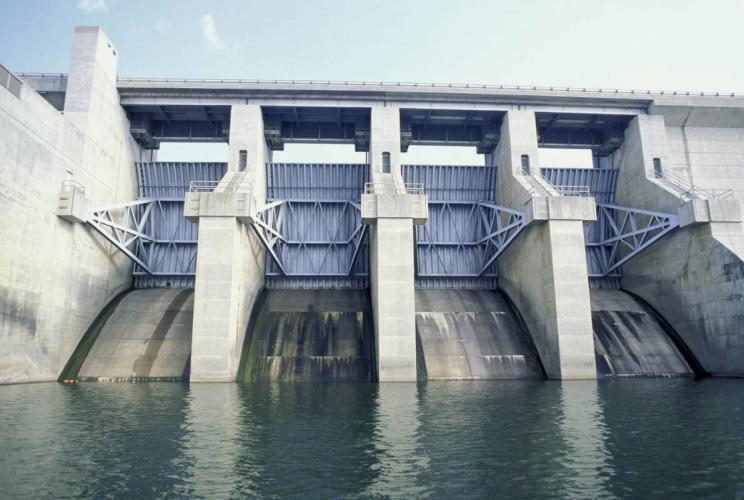
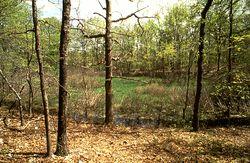
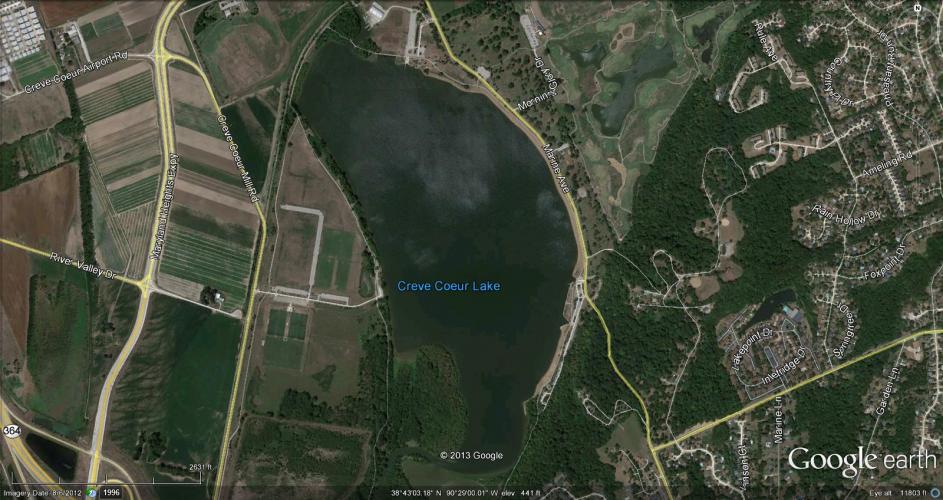
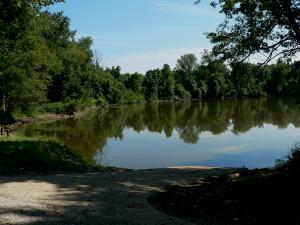
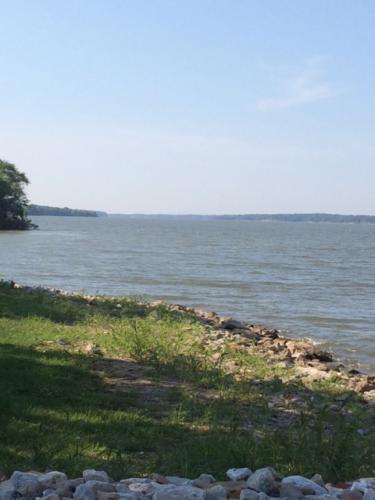
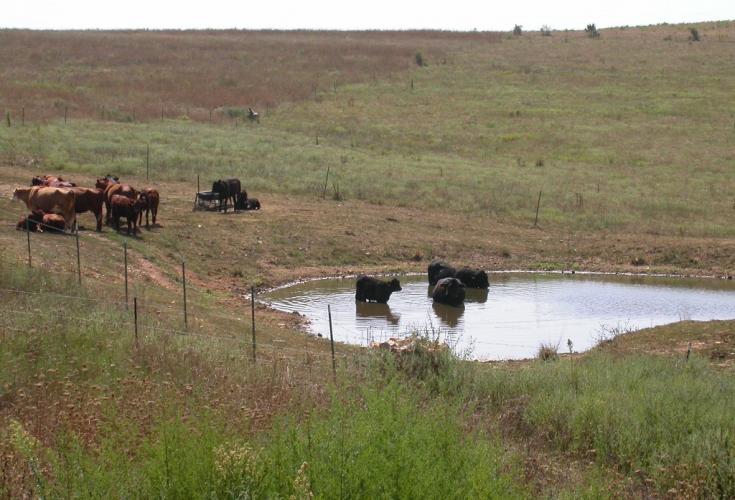
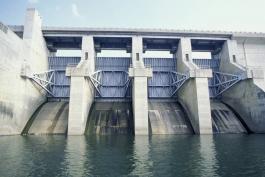
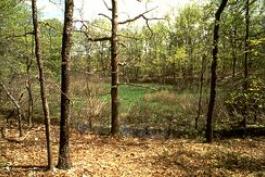
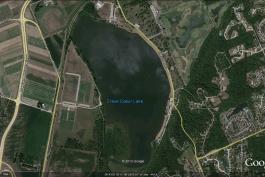
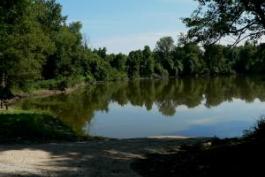
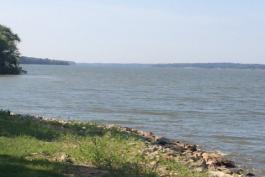
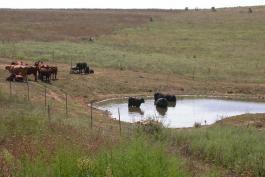
Pond Management
Browse these pages for information on caring for your pond.
Key species
